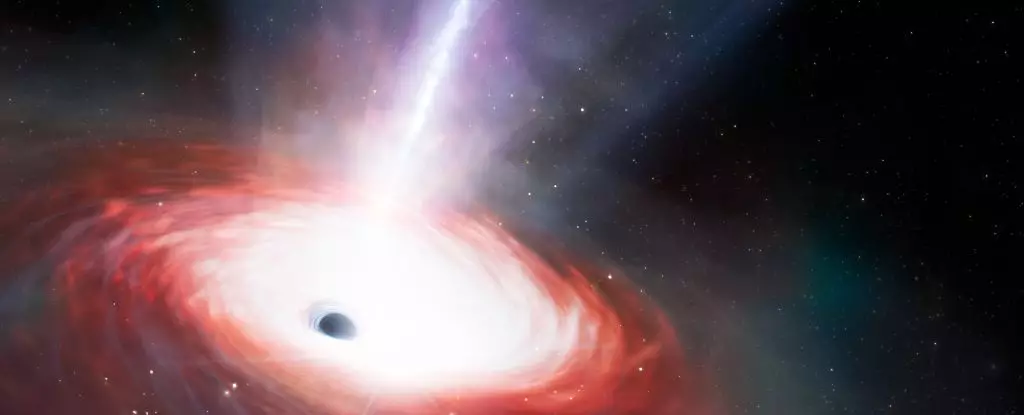In the vast cosmos, certain phenomena captivate astronomers’ imaginations, pushing the frontiers of our understanding of the Universe. One such phenomenon is the supermassive black hole located in the galaxy known as LID-568, observed a mere 1.5 billion years after the Big Bang. Unique in nature, this black hole is presently devouring cosmic material at an astonishing rate, exceeding the theoretical boundaries lay down by the Eddington limit by a staggering factor of 40. This discovery not only sheds light on the feeding habits of these celestial giants but also hints at the intricate mechanisms that foster their rapid growth in the early Universe, an aspect that continues to daunt astrophysicists.
To grasp the significance of this finding, one must first understand the Eddington limit, a principle that describes the balance between a black hole’s gravitational pull and the outward pressure created by radiation emitted during accretion. Conventionally, this limit acts as a ceiling, regulating how much material a black hole can consume at any given time. When the infalling material moves in spirals around the black hole, it heats up due to the immense friction, emitting light and increasing radiation pressure. Once this radiation pressure counteracts gravitational attraction, it effectively halts further infall, establishing the so-called Eddington limit.
However, LID-568 appears to be engaging in super-Eddington accretion—a rare phenomenon where a black hole consumes material at rates that surpass this natural restraint. This abnormal behavior fuels hypotheses about the early Universe, suggesting that these black holes may have had unique feeding mechanisms that enabled them to achieve extraordinary masses within a short span of cosmic time. Julia Scharwächter from the Gemini Observatory aptly describes this occurrence as “a feast,” underscoring the implications this finding has for our comprehension of black hole formation.
Led by astronomer Hyewon Suh and her team from the Gemini Observatory, the intriguing journey to uncover LID-568 involved the utilization of NASA’s James Webb Space Telescope (JWST). Initial observations had revealed a set of faint galaxies that were bright in X-rays but dim in other wavelengths, identified by the Chandra X-ray Observatory. This discrepancy sparked an interest to determine their distances and intrinsic properties. Despite LID-568’s elusive nature, the team refined their observations using JWST’s NIRSpec, successfully pinpointing the galaxy’s location in the cosmic expanse.
Upon closer inspection, researchers discovered substantial outflows from the black hole, a direct consequence of its voracious appetite for accretion material. These outflows serve as vital clues, indicating that, while a significant amount of mass is being consumed, a portion is expelled back into space. The observations were revelatory, revealing that LID-568 houses a supermassive black hole approximately 7.2 million times the mass of the Sun, a relatively small mass compared to the upper echelons of black hole masses.
The luminosity produced by LID-568’s accretion disk far exceeded the predictions for a black hole of its size, indicating a consumption rate that defies traditional understanding. The extreme feeding rate provides astronomers with a valuable window into the conditions present shortly after the Big Bang, suggesting that processes such as super-Eddington accretion could catalyze the rapid formation of supermassive black holes.
The existence of such black holes challenges widely accepted theories about their origins. Traditionally, it was believed that supermassive black holes formed from collapsing massive stars. However, new evidence points toward a more complex formation scenario, possibly involving colossal gas clouds collapsing directly under the force of gravity. This shift in perspective could redefine how cosmologists think about the environments in which the first black holes emerged.
The case of LID-568 stands as a beacon for future astronomical research, providing unprecedented insights into the dynamics of early black hole formation and growth. Its astonishing behavior encourages further exploration into the mechanisms by which black holes can accrete material at super-Eddington rates and the broader implications for cosmic evolution. As scientists eagerly gather and analyze more data from this extraordinary galaxy, we inch closer to unraveling the mysteries of the early Universe—an endeavor that not only enhances our understanding of black holes but also the very fabric of cosmic history.


Leave a Reply